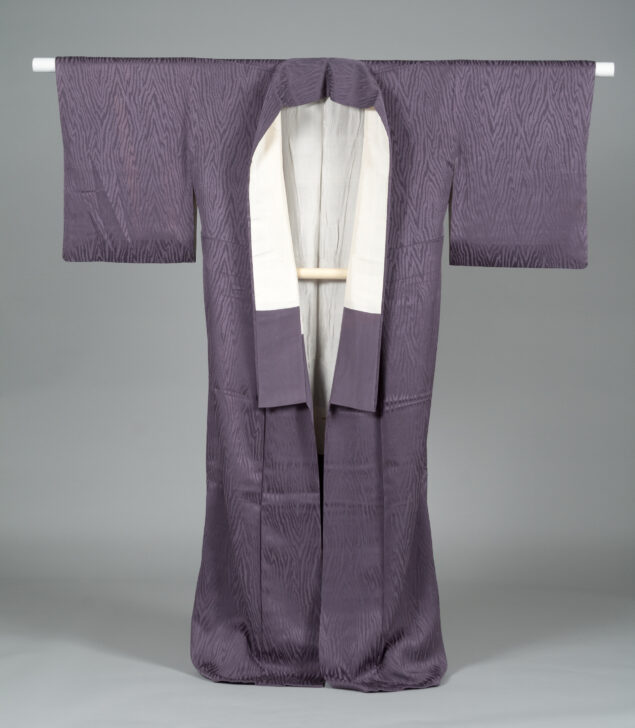Kimono
Japanese

Description
Subject Matter:
Komon kimonos are a type of kimono that contains repeating patterns throughout the fabric. Chirimen refers to the unique wrinkled texture, also called crepe texture, created by a specific weaving technique. This texture is often used with traditional Japanese fabrics, often silk, wool, or synthetic fiber.
Yuzen is a stretch-resist dyeing technique invented by Miyazaki Yuzen, a famous Kyoto fan-painter during the Gentoku era (1688-1704). Yuzen has two dyeing styles: “Tegaki Yuzen” hand painting and “Kata Yuzen” stencil dyeing.
“Tegaki Yuzen” is the more traditional technique. Its hand-painting skills create beautiful and elaborate designs. “Tegaki Yuzen” is named differently according to the place in which it was produced: Kyo Yuzen (Kyoto), Kaga Yuzen (Ishikawa) and Tokyo Yuzen (Tokyo). They are the three major Yuzen in Japan. Among these, Kyo Yuzen is considered the most gorgeous and elegant.
The inner lining includes eight different parts (hakkake) on the bottom and sleeve edges that gives the inner lining a more colorful appearance.
Physical Description:
Gray-purple chirimen komon kimono with interwoven tree bark motifs with a purple and white inner lining.
Usage Rights:
If you are interested in using an image for a publication, please visit https://umma.umich.edu/request-image/ for more information and to fill out the online Image Rights and Reproductions Request Form.